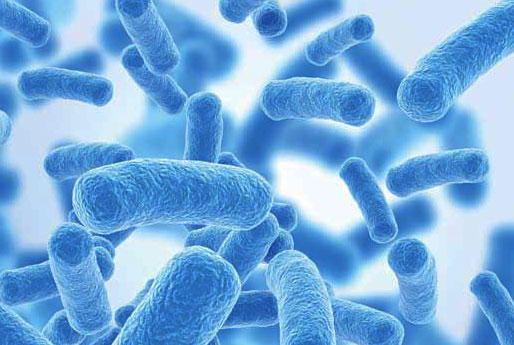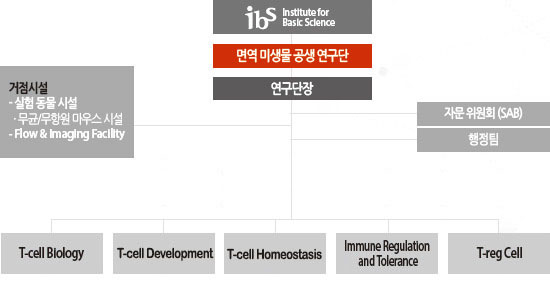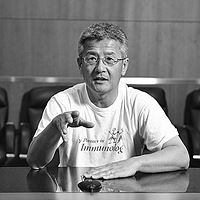
연구단장 대행
연구지원본부 본부장 채순기
연구단 소개

면역 체계와 공생 세균간의 항상성 조절 기작 규명 및 연구
- - 공생 미생물군과 유래항원에 의해 이루어지는 면역 시스템의 발달과 항상성의 유지에 대한 새로운 기작을 규명
- - 자가 항원 및 무해 항원에 대한 면역적 관용을 조절하는 기작을 규명
- - 만성적 자가면역질환, 알레르기 질환 및 암 치료를 위해, 독창적이고 효율적인 면역 조절법 개발
주요 연구 활동
The immune system is essential to protect the host from invasion by pathogenic microbes and outgrowth of cancerous host cells. It is both powerful and versatile, capable of mobilizing a customized potent response to the vast array of pathogens and tumors. Because of its strength, the activated immune response is tightly regulated and is, upon elimination of the invaders, rapidly extinguished to prevent collateral tissue damage. The immune system thereafter “remembers”the invaders and is capable of mounting a stronger and quicker response to subsequent invasions by the same pathogen or cancer.Effective immunity requires a complex network of interactions between multiple types of cells. The primary lymphoid tissues generate immune cells, whose activation is initiated in the secondary lymphoid tissues.
Immune cells are also distributed throughout the non-lymphoid tissues and are particularly prominent in the mucosal tissues that are exposed to the environment. Here, these immune cells perform a highly specialized function by providing protection from environmental pathogens while maintaining operational tolerance to benign antigens and to the massive numbers of commensal microbes that co-exist peacefully with the host. While many key mechanisms that regulate the immune system have been deciphered, much more remain yet to be discovered. The goal of AIM is to discover several of these unknown fundamental mechanisms. Particular focus will be placed on elucidating the mechanisms by which various populations of lymphocytes develop and function, how these cells are activated and regulated in order to protect the host without causing collateral tissue damage, and how these cells co-exist peacefully with the commensal microbes while conferring protective immunity against pathogenic microbes. These discoveries should lead reveal novel approaches to enhance immunity against pathogens and cancer and to prevent or ameliorate chronic immune inflammatory disease, such as autoimmunity, allergies, atherosclerosis and metabolic diseases.
연구단 구성

면역미생물 공생 연구단은 연구단장(Charles D. Suth) 아래 3개의 연구그룹이 있고, 임신혁 부연구단장 밑에 2개의 연구그룹이 있습니다. Charles D. Suth 단장아래에는 T-cell Biology Lab, Gastro intestinal Immunology Lab, T-cell Homeostasis Lab이 있습니다. 임신혁 그룹리더 아래에는 Immune Regulation and Tolerance Lab, T-reg Cell Lab이 있습니다.
연구단은 자문위원회(SAB)와 관리팀이 있으며 거점시설로는 실험 동물시설(무균/무항원 마우스 시설)과 Flow & Imaging Facillity 가 있습니다.
주요 연구성과
- 음식유래 항원이 특이적 조절 T 세포를 통한 점막 면역 억제 기작 규명
(Science, 2016) - 수용체형 단백질 인산화분해 효소인 CD45에 의한 CD8 T 세포의 T 세포 수용체 활성화 조절
(Nature Communications, 2016) - 비만 세포 조절을 통해 음식 알레르기 조절이 가능한 유산균 유래 단백질 발견
(J Allergy Clin Immunol, 2016) - 항생제 및 장내 균총 변화에 의한 Th2 염증 조절 연구
(Plos ONE, 2015) - 6-MF에 의한 T 세포의 활성 저하 및 아토피 피부염 완화 연구
(J Immunol, 2014)
인력 구성
| 총원 | 48 |
|---|---|
| 성별 | 25(남), 23(여) |
| 내·외국인 | 39(내국인), 9(외국인) |
2017년 3월 기준
故 찰스 서(Charles D. Surh) IBS 면역 미생물 공생 연구단장(1961~2017)

故 찰스 서 단장은 미국 샌디에이고 캘리포니아대(UC San Diego)를 졸업했고(화학), 미국 데이비스 캘리포니아대(UC Davis) 면역학 박사 학위를 받았다. 이후 미국 스크립스 연구소(The Scripps Research Institute, TSRI)에서 박사후과정과 선임연구원 조교수, 정교수를 역임했다. 2012년 IBS 면역 미생물 공생 연구단장에 선임되면서 한국으로 돌아와 연구를 지속했다. 같은 해 포스텍 교수로도 임용됐다.
故 찰스 서 단장은 1984년부터 120편 이상의 논문을 발표한 세계적인 면역학자다. 스크립스 연구소 재직 시절 핵심 면역세포인 T세포의 탄생부터 소멸까지의 전 과정을 규명한 논문을 네이처와 사이언스 등 유명 과학 저널에 잇달아 발표했는데, 특히 흉선에서 만들어진 T세포 중 1%만이 외부 침입자를 공격한다는 사실을 세계 최초로 발견했다. 이러한 뛰어난 업적들로 2007년에는 호암 의학상을 수상, 2010년에는 한국을 빛낼 100인에 선정되기도 했다.
국내에서 고인은 IBS 연구팀을 이끌며 면역 체계와 공생 세균 군체 간 상호조절 기작 연구에 주력했다. 2016년 2월에는 음식물의 장내 면역반응 억제 원리를 밝혔고(사이언스 게재), 2017년 7월에는 면역 세포 간 생존 경쟁이 면역계의 균형을 유지한다는 사실을 규명(이뮤니티 게재)하는 성과를 거두었다. 2015년 초 암 판정을 받은 뒤에도 연구와 치료를 병행했다.
학력
- 1983 미국 샌디에이고 캘리포니아대 화학 학사
- 1989 미국 데이비스 캘리포니아대 면역학 박사
- 1993~1998 미국 스크립스 연구소, 면역학 분과, 조교수
- 1998~2005 미국 스크립스 연구소, 면역학 분과, 부교수
- 2005~2008 미국 스크립스 연구소, 면역학 분과, 종신 재직 부교수
- 2008~2012 미국 스크립스 연구소, 면역학 분과, 정교수
- 2012~2017 미국 스크립스 연구소, 면역학 분과, 겸직 교수
- 2012~2017 미국 라호야 알레르기·면역 연구소, 면역학 분과, 겸직 교수
- 2012~2017 포항공과대학(POSTECH) 융합생명공학부, 정교수
- 2012~2017 기초과학연구원(IBS), 면역 미생물 공생 연구단 연구단장
- 1993~1996 미국 백혈병학회, 선임연구위원
- 1999~2004 미국 백혈병 및 림프종학회, 위원
- 2007 호암 의학상
- 2010 동아일보 선정 '2020년 한국을 빛낼 100인'










 연구단소개
연구단소개




